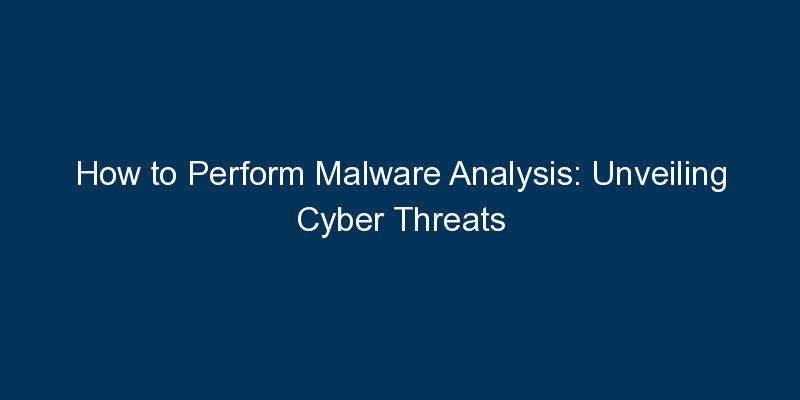Malware analysis is a critical skill in cybersecurity, allowing professionals to dissect and understand malicious software. This blog provides a comprehensive guide on how to perform malware analysis, equipping cybersecurity experts with the knowledge to identify and mitigate cyber threats effectively.
Introduction:
As cyber threats continue to evolve, understanding the nature of malware is essential for effective cybersecurity. Malware analysis involves dissecting malicious software to uncover its functionalities, origins, and potential impact. This guide explores the key steps in performing malware analysis.
Key Steps to Perform Malware Analysis:
- Define Malware Analysis Goals: Clearly define the goals of your malware analysis. Whether it’s understanding the malware’s capabilities, identifying its origin, or developing countermeasures, having well-defined objectives is crucial.
- Static Analysis: Conduct static analysis by examining the malware’s code without executing it. This involves examining file attributes, extracting strings, and analyzing the code structure to gain insights into its functionalities.
- Dynamic Analysis: Execute the malware in a controlled environment to observe its behavior. Dynamic analysis provides real-time insights into the malware’s actions, including network communications, system changes, and payload delivery.
- Behavioral Analysis: Analyze the overall behavior of the malware, focusing on its interactions with the system and network. This includes identifying malicious activities, such as data exfiltration, privilege escalation, or attempts to disable security features.
- Code Reverse Engineering: Reverse engineer the malware’s code to understand its logic and functionality. This involves disassembling or decompiling the code to reveal its internal workings, aiding in the identification of vulnerabilities or evasion techniques.
- Threat Intelligence Integration: Incorporate threat intelligence feeds into your analysis. This helps correlate findings with known threats, attribution details, and indicators of compromise (IoCs) to enhance the overall understanding of the malware.
Conclusion:
Malware analysis is a crucial skill for cybersecurity professionals tasked with uncovering and mitigating cyber threats. By following the steps outlined in this guide, organizations can enhance their ability to dissect and understand malicious software, strengthening their overall cybersecurity posture.






















Comments